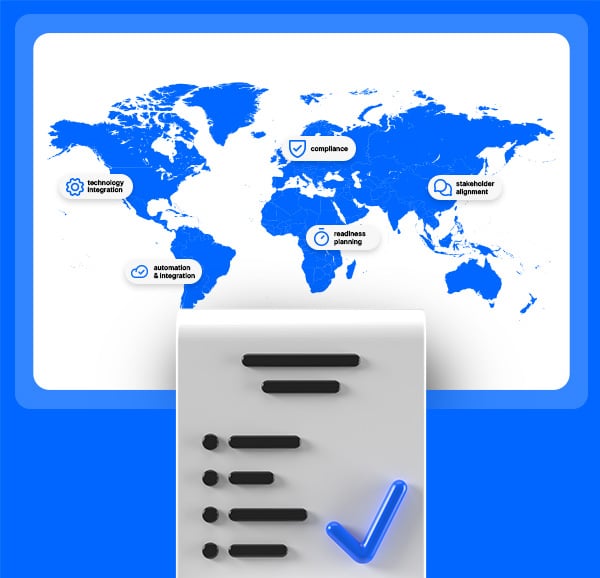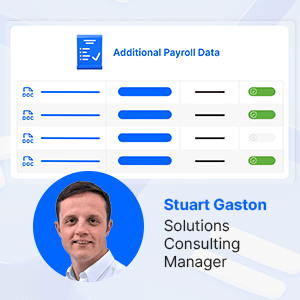The changes across the business world and the ways in which we work over recent years have shaken up a lot of things for payroll. What was a relatively quiet function within a business has now emerged as a supporter of real strategic value, which has a central role to play in employee experience. This has led to an acceleration in the innovation and technological advancement of payroll, the positive impact of which is now becoming clear.
The findings of our recent Global Payroll Efficiency Index (PEI) report make that clear. Compared to last year, the rate of first-time approvals has reduced: this could sound like a step backwards, but at the same time, the proportion of data input issues, and the number of issues per 1000 payslips have both declined, too. This suggests that innovation is helping teams detect and resolve more problems at the checking and validation stages, so that fewer inaccuracies make it as far as the payroll run itself.
Of course, ‘innovation’ is a very broad term, so it’s important to understand the three main technological factors behind improved payroll performance, and how they work in practice.
Innovation one: Integration
More and more organizations are coming to realize the benefits of integrating payroll systems with other related areas, including payments, and Human Capital Management (HCM) systems. By rationalizing and synchronizing data across multiple platforms, and unifying systems around a single source of information, the risk of data duplication and inconsistencies creeping in can be drastically reduced.
The rise of this integration is reflected in our 2024 PEI report findings, where over the last five years, the proportion of data input issues out of all payroll problems has reduced by more than ten percentage points. Beyond reducing data input issues, integration offers a wide range of improvements:
- Delivering better employee experiences through interconnected functions
- Supporting more consistent data and better compliance
- Enabling more detailed and insightful analytics to be conducted
- Driving better decision-making through improved visibility
- Improving employee perceptions by reducing payroll inaccuracies
- Minimizing manual processes to save payroll staff time
- Automating more workflows for better efficiency and reporting
Innovation two: Alternative payment options
Running payments has become much more complex in recent years. Fragmented payment systems hosted by multiple parties lead to a lack of visibility and control, while variation around bank funding and payments from one country to another can lead to inconsistencies, and unnecessarily high fees and foreign exchange rates. This is being resolved through two different kinds of alternative payment options, which together have driven payment timeliness up to 99.28% in this year’s PEI report.
The first of these is ‘pay-to-card’, a pioneering money movement solution based around a single, secure global network. This sidesteps the lengthy, admin-heavy process of setting up BACS, ACH or SEPA payments, and is helping organizations in:
- Reducing salary payments from days to seconds
- Making instant payments to any debit or credit card at any time
- Enabling greater accuracy and traceability of payments
The second is pay on-demand (also known as Earned Wage Access), which allows employees to accrue wages on a shift-by-shift basis, and independently access and withdraw their earnings whenever they want through a self-service app:
- Improving employee experience to drive better talent retention and acquisition
- Freeing payroll teams from the restraints of fixed payroll cycles
- Giving employees vital flexibility in their personal financial affairs
- Supporting employees in avoiding credit card debt and payday loans
Innovation three: Artificial intelligence
As payroll has become more strategic and more complex, the workload and admin burden on payroll teams has risen substantially. This has led to staff becoming more pressured, more tired and more stressed, making them more likely to make mistakes.
Technology like artificial intelligence has taken great strides, especially in the last couple of years, in lightening the load and taking care of the more repetitive and mundane payroll processes. Automation of data entry, validations, and reconciliations is already having a major effect.
This goes some way to explaining why the rate of issues per 1000 payslips in the 2024 PEI report has dropped by 35% since 2019: AI is helping drastically reduce or even eliminate the risk of human error:
- Giving back time and energy to payroll staff for adding value elsewhere
- Reducing payroll cycle times for greater efficiency and accuracy
- Adapting to new, more complex and more diverse payroll demands
- Cutting friction in data movement and workflows
- Generating predictive insights into future payroll trends
In summary
The three areas of innovation above are far from the end of the story: technology will continue to play an even greater role in transforming payroll in the months and years ahead. For example, Natural Language Processing will increasingly be able to automate the processing of unstructured documents that have thus far had to be dealt with manually.
Whatever the future holds, it’s the organizations that push forward with innovation and digital transformation now that will be in the strongest position with their payroll in the future.
Learn more about how technology is improving payroll performance in CloudPay’s full 2024 Global Payroll Efficiency Index report. Download your copy today to explore the data and findings in detail.


